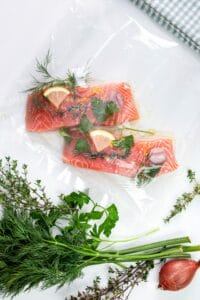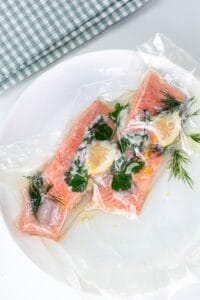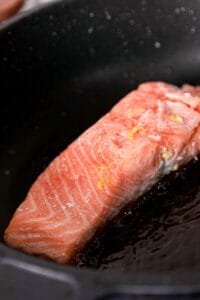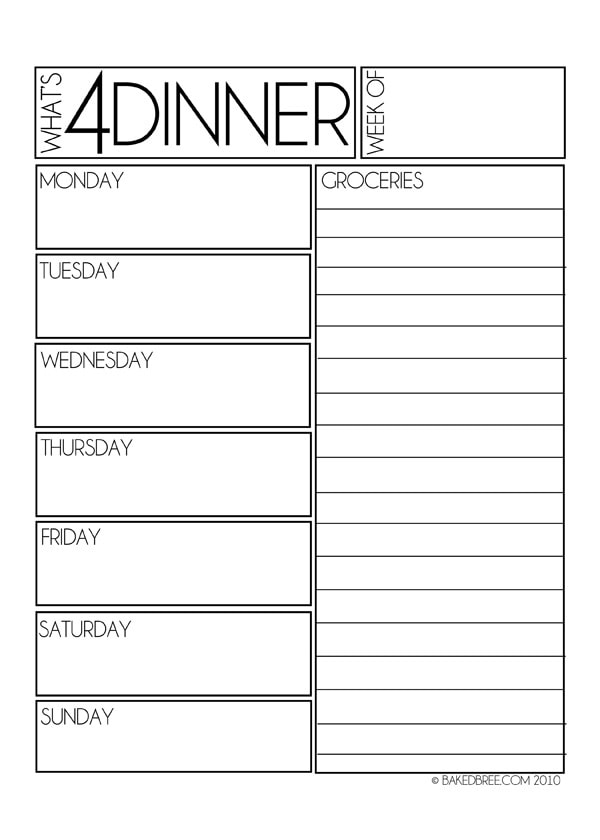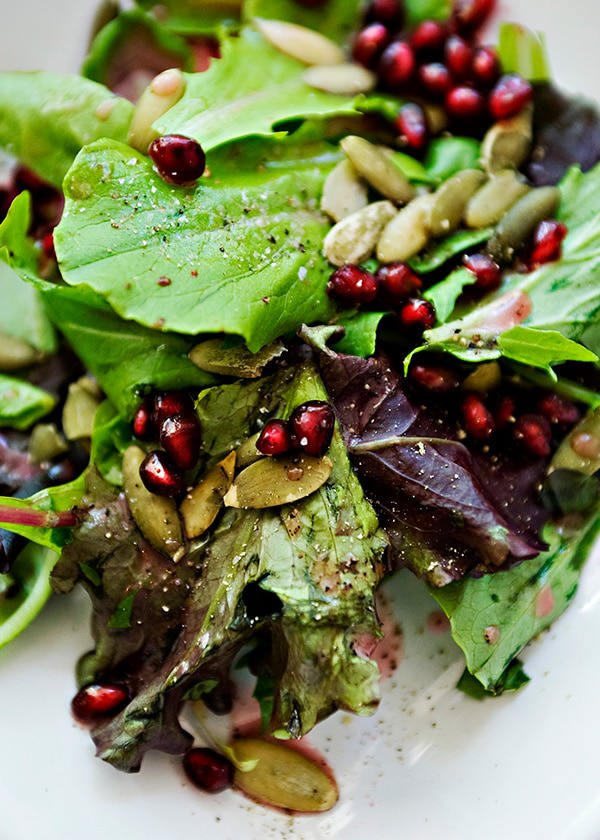Put the ‘sous’ in ‘super’ with this recipe for Sous Vide Salmon. Don’t think you’ve got what it takes for French cuisine? Think again. In just a few steps, you’ll know what it’s like to bite into perfectly cooked fish.

Even before I knew what sous vide cooking was, I knew I wanted to be a part of it. That is, I wanted to try it and taste for myself whether the technique was truly all that and a bag of chips (or frites, seeing as how we’re using a French style of cooking).
When I eventually educated myself (translate: watched numerous videos on YouTube) and learned what sous vide (translate: under vacuum) was, I KNEW I had to get myself kitted out (translate: I had to buy the stuff I would need). Part of me was excited to incorporate science into my cooking while another part of me just wanted an excuse to buy another kitchen gadget. While yet another part of me just wanted to sample the best fillet of salmon I could cook. And using the sous vide method, that perfect fillet was within my grasp.
The reason sous vide cooking is so effective is that you are able to cook your food in a controlled environment. The food is vacuum sealed, so no air will impact the process. It is then placed in water whose temperature remains constant. The result is a meal cooked with the accuracy of a scientific experiment.
Salivating yet? Trust me, you will be. This salmon’s trek from the ocean to your sous vide bath to your plate will all be worth it when you take one bite. Flaky fish cooked exactly to your specifications… every time.
What do I need to make sous vide salmon?
Perhaps the reason why you don’t hear about sous vide cooking all that often is because it requires specific appliances to make it happen. And they are not considered “mod cons” to the extent they will be incorporated into the design of a new-model home. You also don’t see it featured on many menus (although the Cheesecake Factory might mention it in the later chapters of its menu; I wouldn’t know, as I’m still on Chapter 3). Anyway, the basics you’ll need are Ziploc bags and water. So far, so good. Where it gets more complicated is whether you should get a water bath or an immersion circulators. Water baths are small appliances that remind me of a deep fryer. They may prove difficult to pack away when not in use and require considerable counter real estate. An immersion circulator, meanwhile, is a slightly bulkier immersion blender. As the name indicates, you “dip” it into a water-filled vessel along with your salmon, whereas the salmon goes into the water bath solo. For most home chefs, the immersion circulators will suffice, as the benefit of using a water bath—its capacity—is wasted on those preparing a meal for 2 to 4 diners.
Ingredients
- 4 (5 oz.) salmon fillets
- kosher salt (to taste)
- 2 tbsp extra-virgin olive oil
- fresh thyme, dill, parsley, thinly sliced shallots, citrus zest (optional aromatics)
- 2 tsp vegetable oil (if searing)

How to Make Sous Vide Salmon
Step 1: Season the salmon fillets generously with kosher salt on all sides.
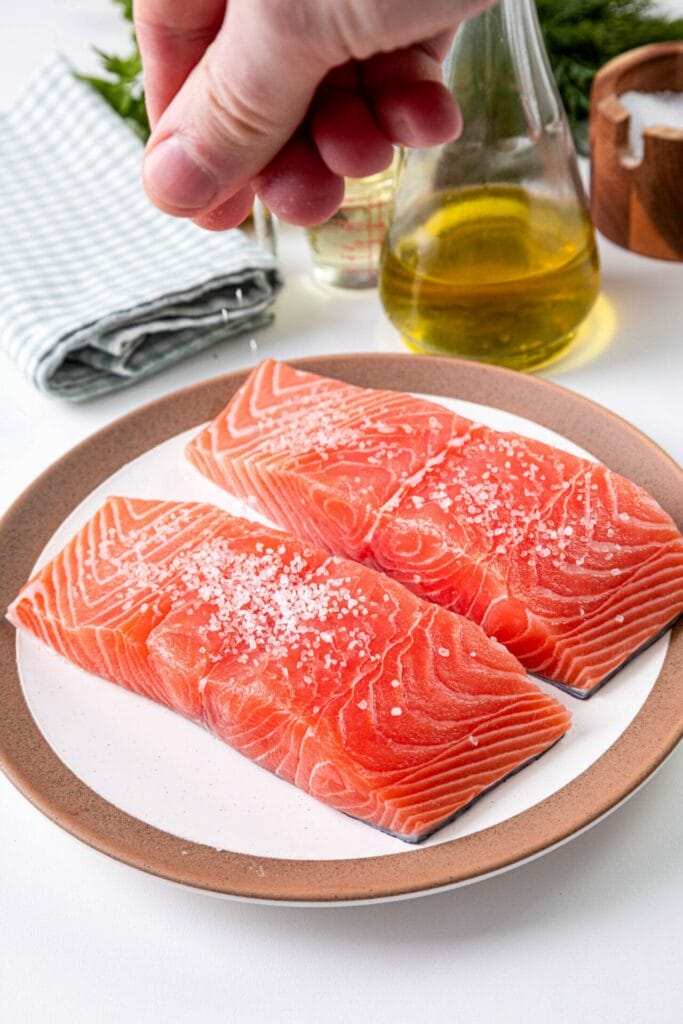
Step 2: Place the salmon in a single layer in a large Ziploc bag, adding olive oil and optional aromatics. Seal the bag, leaving it to rest in the refrigerator for 30 minutes to overnight.
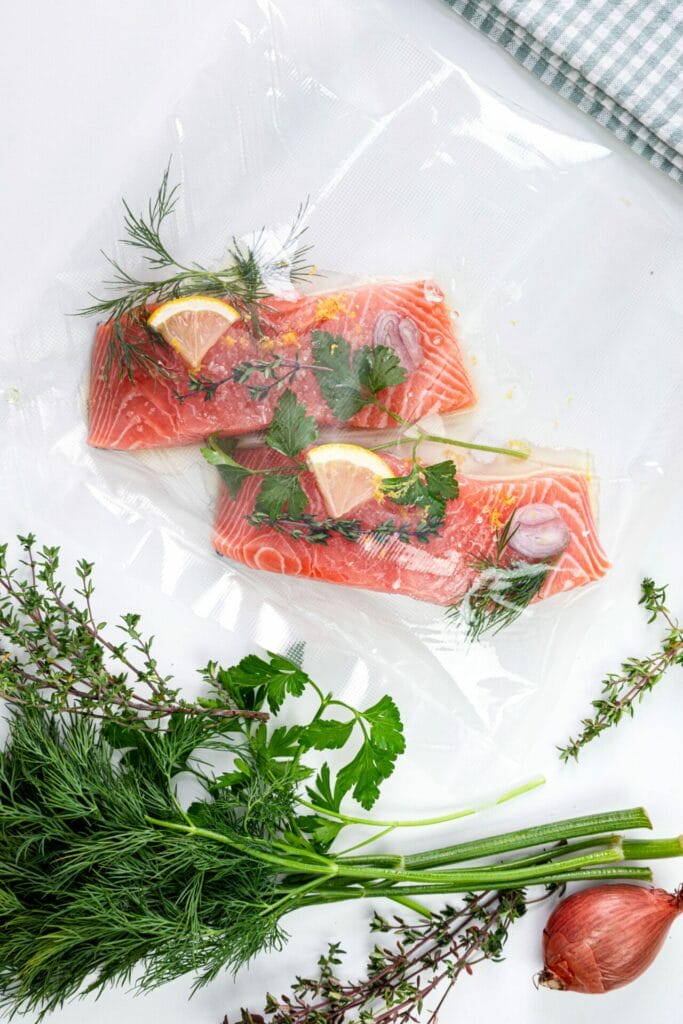
Step 3: Preheat your water using an immersion circulator. Then, using the water displacement method, remove the air from the bags and cook the salmon for 30 to 45 minutes for fillets up to 1 inch thick, or 45 minutes to 1 hour for thicker fillets.
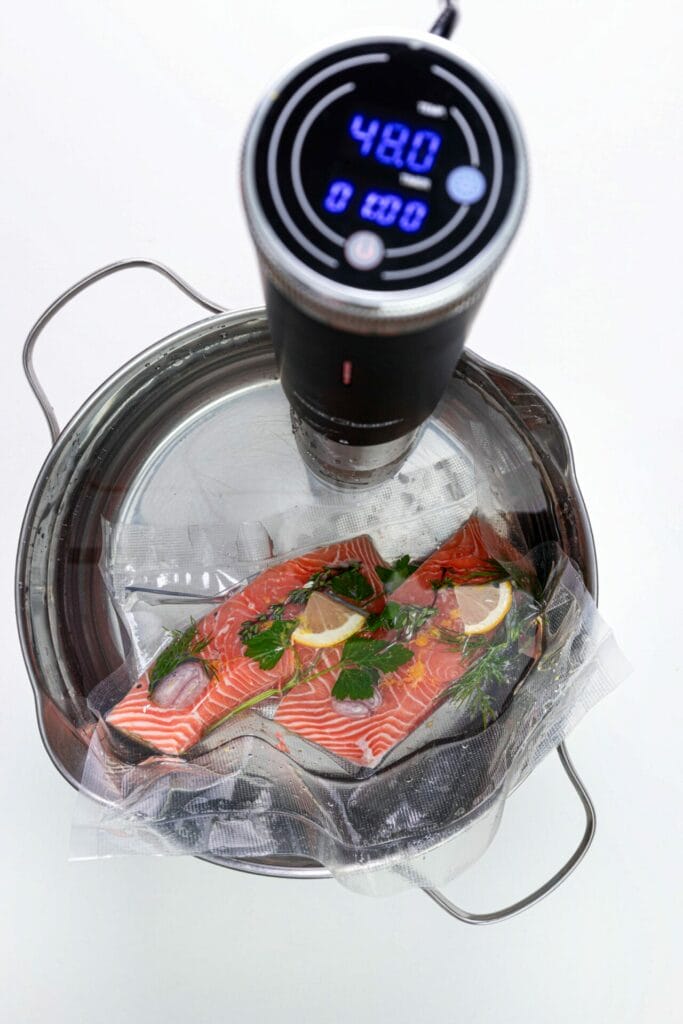
Step 4: Once cooked, carefully remove the salmon from the bags, discard the aromatics, and gently blot the salmon dry with paper towels.
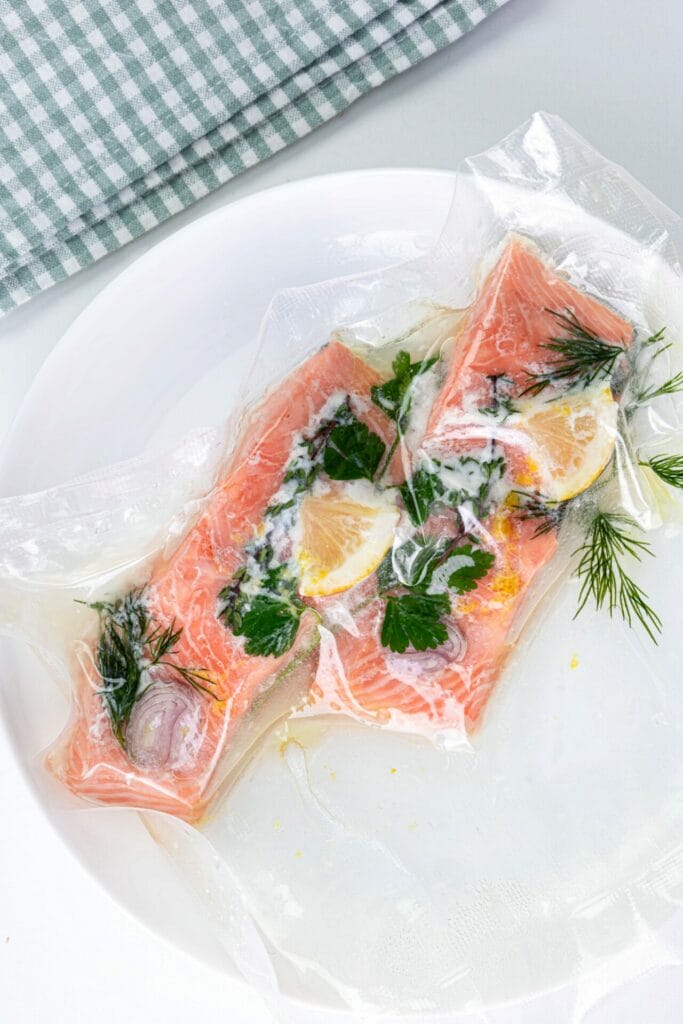
Step 5: For immediate serving, peel away the skin and present the skinned side down. For cold serving, chill the salmon in the refrigerator and use as desired. To sear, heat vegetable oil in a skillet and cook the salmon until the skin is crisp, then serve.
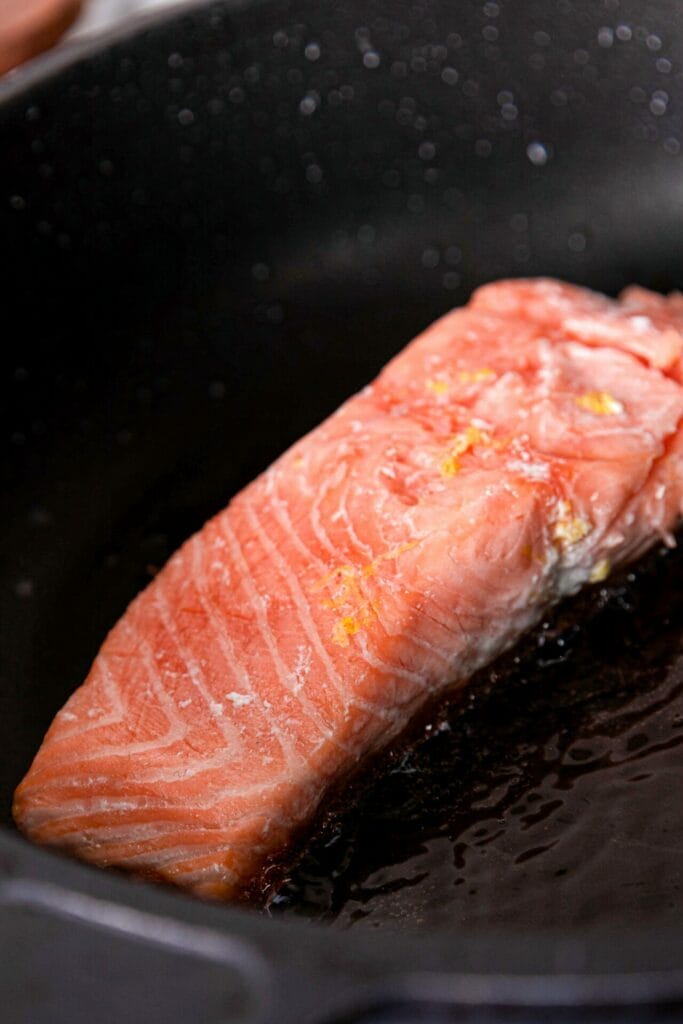
FAQs & Tips
If you wanted to cook sous vide salmon ahead of time, you can do so. In fact, you can leave the cooked salmon in the bag and let it chill in the fridge for up to four days. Or you can put it in the freezer for up to three months. You can store any leftovers in an airtight container in the fridge for up to three days or in the freezer for up to three months. If you froze your salmon, you should let it thaw overnight in the fridge before you reheat it.
Yep, you can use frozen salmon fillets but I find thawing them out completely will yield the best results. Your fish will be cooked evenly, which is something you can’t guarantee if using a frozen fillet. A thawed fish will also allow you to rub the herbs and spices into the meat, which will prove difficult if it’s rock solid. You will also need to adjust the cooking time by 50–100%. So, if you figured it would take you about 30 minutes to cook your salmon, it will now take 45–60 minutes when dealing with frozen fillets.
I mention in the recipe that you can add fresh thyme, dill, parsley, thinly sliced shallots, and/or citrus zest, but you can also use cilantro (a divisive ingredient, I realize), lemon/lime slices, minced garlic, onion powder, or spices like paprika, cumin, coriander, or chili powder. You can also add a sauce to the bag to make a flavorful marinade: soy sauce, teriyaki sauce, Worcestershire sauce, or balsamic glaze. And if you’re after a slight sweetness, add honey, maple syrup, or brown sugar. Whatever you add, err on the side of caution. Start small. It’s better to add too little than too much.
When you put your salmon in a plastic bag then slowly dip the bag/salmon into water (leaving the mouth of the bag above the water line so that no water gets into the bag), the water will push the air out of the bag, sort of like a vacuum sealer. Speaking of which, you can use a vacuum sealer if you have one. Those who don’t will be able to marvel at science in action.
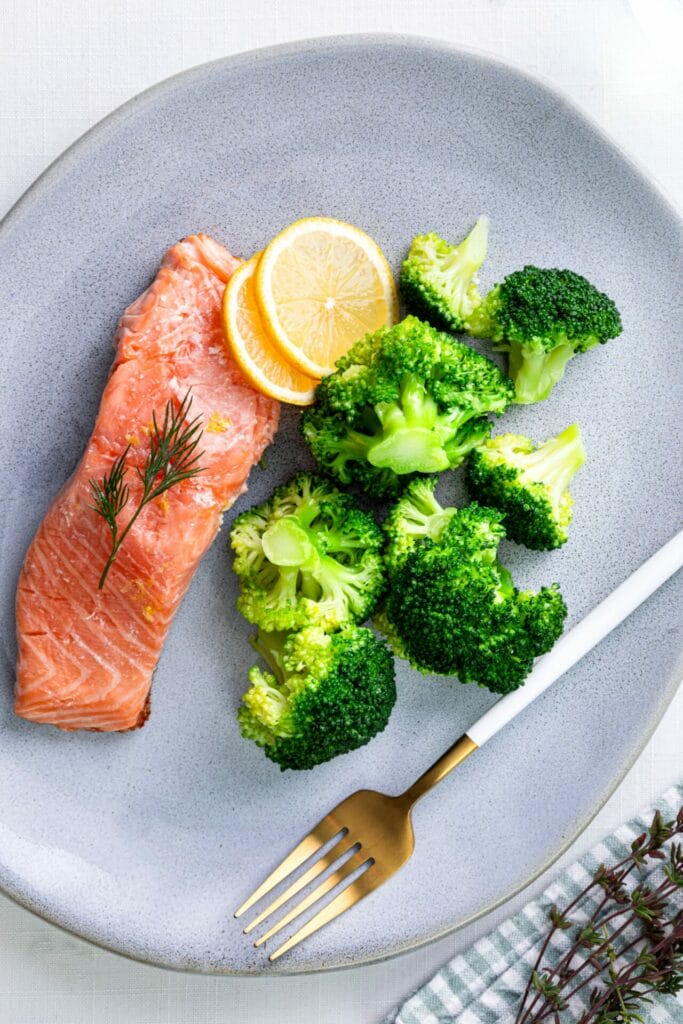
Serving Suggestions
Sous vide salmon will taste great with the same sides you typically serve with any salmon. So this recipe for Garlic Mashed Potatoes will be of some help, especially if you infused your salmon with garlic. As will this Mediterranean Rice Salad, made with cool basmati rice, citrus juices, herbs, spices, currants, and pistachios. For a light and healthy side, steamed vegetables will work a treat, then, having been good for your main course, you can indulge afterwards in my rendition of Anna Olson’s Apple Pie.
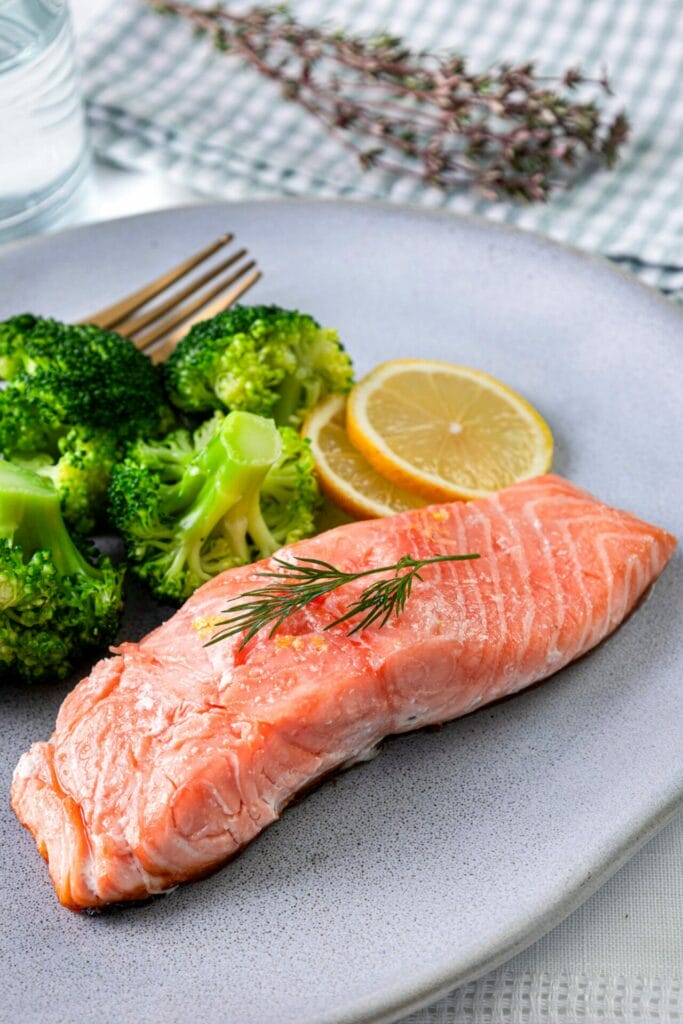

Sous Vide Salmon
Ingredients
- 4 (5–6 oz.) salmon fillets
- kosher salt (to taste)
- 2 tbsp extra-virgin olive oil
- fresh thyme, dill, parsley, thinly sliced shallots, citrus zest (optional aromatics)
- 2 tsp vegetable oil (if searing)
Instructions
- Season the salmon fillets generously with kosher salt on all sides.

- Place the salmon in a single layer in a gallon-size Ziploc bag, adding olive oil and optional aromatics. Seal the bag, leaving it to rest in the refrigerator for 30 minutes to overnight.

- Preheat your water bath using an immersion circulator. Then, using the water displacement method, remove the air from the bags and cook the salmon for 30 to 45 minutes for fillets up to 1 inch thick, or 45 minutes to 1 hour for thicker fillets.

- Once cooked, carefully remove the salmon from the bags, discard the aromatics, and gently blot the salmon dry with paper towels.

- For immediate serving, peel away the skin and present the skinned side down. For cold serving, chill the salmon in the refrigerator and use as desired. To sear, heat vegetable oil in a skillet and cook the salmon until the skin is crisp, then serve.


